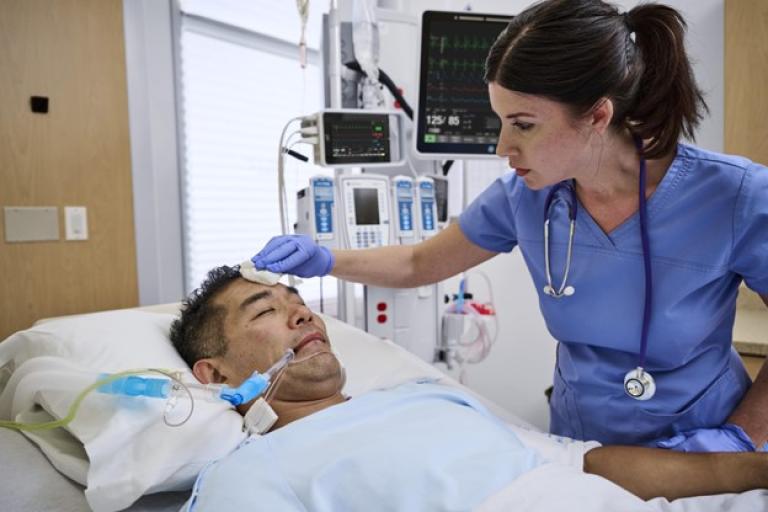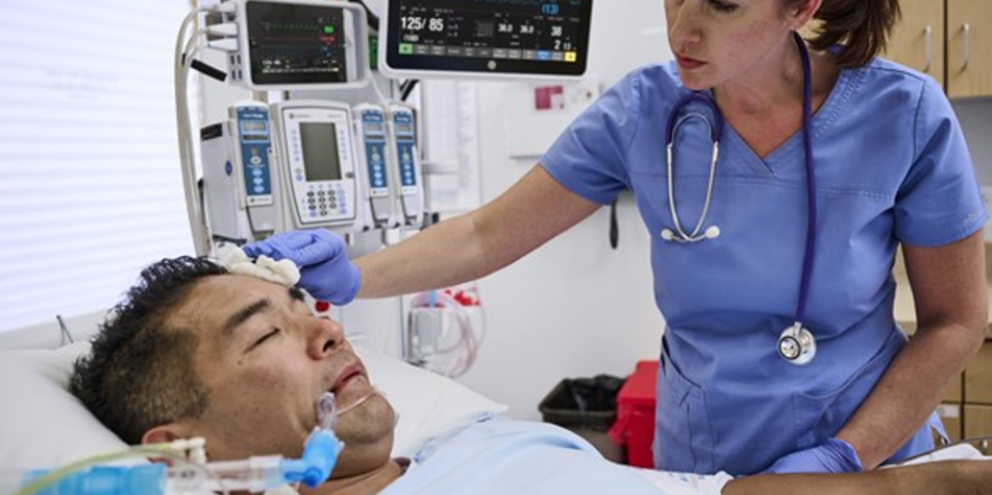
However, rather than solely relying on NMBAs for patient care, new guidelines from the American Society of Anesthesiologists (ASA) strongly recommend coupling the use of NMBAs with quantitative neuromuscular transmission (NMT) monitoring.1 Electromyography (EMG) monitoring measures muscular response to stimulation; is a technology that's been in the market for many years, and it's a critical factor in determining the proper dosage of reversal agents, helping avoid residual neuromuscular blockade.
The ASA guidelines recommend quantitative NMT monitoring over more frequently used qualitative assessment to avoid residual neuromuscular blockade. This is because stimulating a peripheral nerve in the hand to measure a visual or tactile response is imprecise and is associated with higher rates of residual analysis (given that it depends upon the clinician's subjective and qualitative visual or tactile assessment of a response). With quantifiable, individual patient anesthetic dosage needs clearly displayed, care teams can utilize NMT monitoring to:2,3
- Facilitate optimal and cost-effective administration of neuromuscular blocking drugs and reversal agents
- Help reduce postoperative complications
- Help improve recovery time
Many anesthesiologists rely only on clinical assessment and administration of sugammadex without quantitative monitoring to avoid residual paralysis.. However, without precise measurements, it's hard to know for sure if the patient has residual neuromuscular blockade. The ASA recommends against relying on clinical assessment alone. Instead, clinicians are recommended to use quantitative monitoring and sugammadex when treating patients with NMBAs.1
The Benefits of quantitative EMG measurement
Hospitals and health centers can reap benefits in patient safety, cost savings, and reliability by adopting NMT monitoring with EMG-based technology. The key is to mitigate cases of residual paralysis, and EMG monitoring is a great way to start.
The ASA notes that residual paralysis leads to an increased risk of numerous adverse outcomes after surgery, which can lower patient satisfaction and increase overall health costs. Some of the risks the ASA highlights include upper airway obstruction, reintubation, atelectasis, and a longer stay in the postanesthesia care unit (PACU).1 These risks can be hard to quantify as they often happen when the patient is no longer in the anesthesiologist's care. However, the ASA found "convincing evidence" that avoiding residual paralysis can improve patient outcomes.
Despite its accuracy and ability to limit cases of residual paralysis, EMG-based monitoring has experienced slow uptake in operating rooms. However, EMG presents opportunities for cost savings, time savings, and patient care. In addition, the technology can be smooth to integrate into the anesthesia workflow. Adopting now puts hospitals and health centers at the forefront of anesthesiology care. These benefits include:
- Reliability. EMG-based monitoring provides more reliable readings than AMG-based monitoring and is less sensitive to movement with patients.4 This makes it an ideal choice for robotic surgery or other procedures where the patient's arms are fixed to the body.
- Safety. Accuracy helps optimize recovery by supporting adequate delivery of anesthesia medications and antagonists. Ensuring patients do not have residual paralysis aims to improve recovery times and reduce the risk of anesthesia-related complications.
- Adherence to guidelines. Both the ASA and the European Society of Anaesthesiology and Intensive Care (ESAIC) recommend using quantitative monitoring to avoid residual paralysis after surgery.5 With the usability of its disposable sensors and reliability, EMG may become the dominant form of NMT monitoring.4
- Ease of use. Sensors such as GE HealthCare's ElectroSensors make it easy to quickly and correctly connect patients to the NMT monitor. The disposable electrodes are easy to apply and remove, with an all-in-one design, while color-coded sensors make application clear. EMG is not sensitive to movement, so there's no preload or mobilization of the thumb needed. In addition, the sensors work on the hand, which is preferred, but also on the foot if the hand is unavailable. The sensor cables connect to the NMT module, which allows for clear visuals of the TOF ratio and other essential insights into the patient.
- Cost savings. Accurate readings can aid in appropriate dosing of neuromuscular blocking agents and reversal agents. A recent study found that using EMG monitoring to guide the use of reversal agents led to an average cost savings of $43 per patient, with 0% incidence of residual paralysis.6 Most importantly, reducing care for complications and time in the PACU can save on overall health costs for patients and institutions.
More hospitals are adopting EMG-based NMT monitoring as the technology continues to advance and become easier for anesthesiologists to incorporate. ElectroSensors, for example, are available for adult and pediatric patients and work with GE HealthCare's E-NMT module. The module provides real-time measurements of TOF ratio, TOF count, post tetanic count, single twitch, and double-burst stimulation.
The time is now for healthcare institutions to adopt EMG-based NMT monitoring and take advantage of new technologies like these to avoid residual paralysis and observe each of the above benefits.
Resources:
1. Todd MM, Thilen SR, Weigel WA, et al. 2023 American Society of Anesthesiologists practice guidelines for monitoring and antagonism of neuromuscular blockade: A report by the American Society of Anesthesiologists task force on neuromuscular blockade. Anesthesiology. January 2023; 138: 13-41. https://pubs.asahq.org/anesthesiology/article/138/1/13/137379/2023-American-Society-of-Anesthesiologists. Accessed October 9, 2023.
2. Lori-Ann Edwards, Nam Ly, Jonathan Shinefeld, et al. Universal quantitative neuromuscular blockade monitoring at an academic medical center—A multimodal analysis of the potential impact on clinical outcomes and total cost of care, Perioperative Care and Operating Room Management, Volume 24, 2021, 100184, ISSN 2405-6030, https://doi.org/10.1016/j.pcorm.2021.100184.
3. Glenn S. Murphy, Sorin J. Brull; Quantitative Neuromuscular Monitoring and Postoperative Outcomes: A Narrative Review. Anesthesiology 2022; 136:345–361 doi: https://doi.org/10.1097/ALN.0000000000004044
4. Lee W. The latest trend in neuromuscular monitoring: return of the electromyography. Anesthesia & Pain Medicine (Seoul). April 2021; 16(2):133-137. doi:10.17085/apm.21014. https://www.anesth-pain-med.org/journal/view.php?doi=10.17085/apm.21014. Accessed October 9, 2023.
5. Fuchs-Buder T, Lewald H, Romero CS, et al. Peri-operative management of neuromuscular blockade: A guideline from the European Society of Anaesthesiology and Intensive Care. European Journal of Anaesthesiology. February 2023; 40(2):82-94. https://journals.lww.com/ejanaesthesiology/Fulltext/2023/02000/Peri_operative_management_of_neuromuscular.3.aspx Accessed October 9, 2023.
6. James AM, Thilen SR, Sherpa JR, et al. Management of muscle relaxation with rocuronium and reversal with neostigmine or sugammadex guided by quantitative neuromuscular monitoring. Anesthesia & Analgesia. May 2023. https://journals.lww.com/anesthesia-analgesia/abstract/9900/management_of_muscle_relaxation_with_rocuronium.576.aspx. Accessed October 9, 2023.







